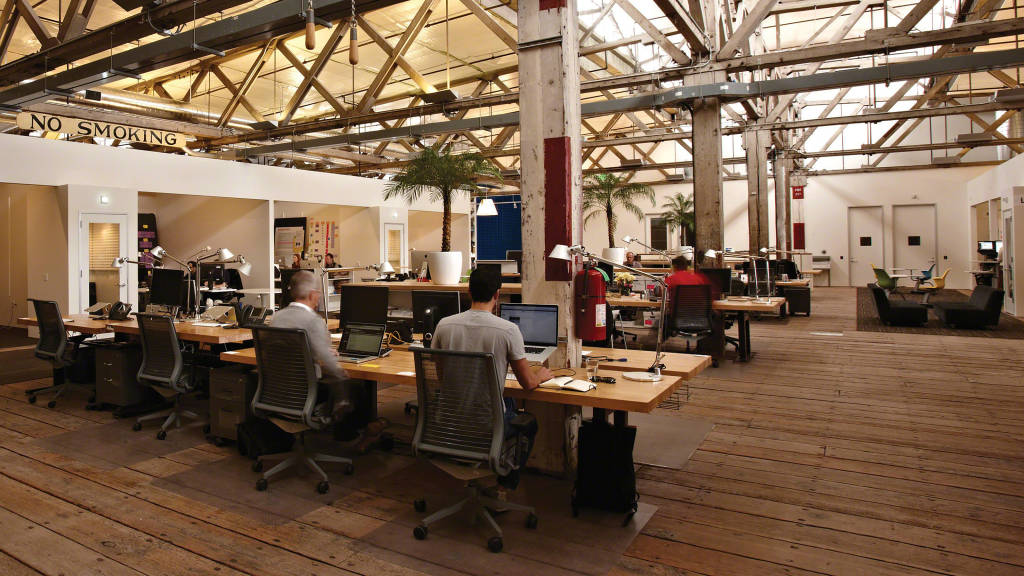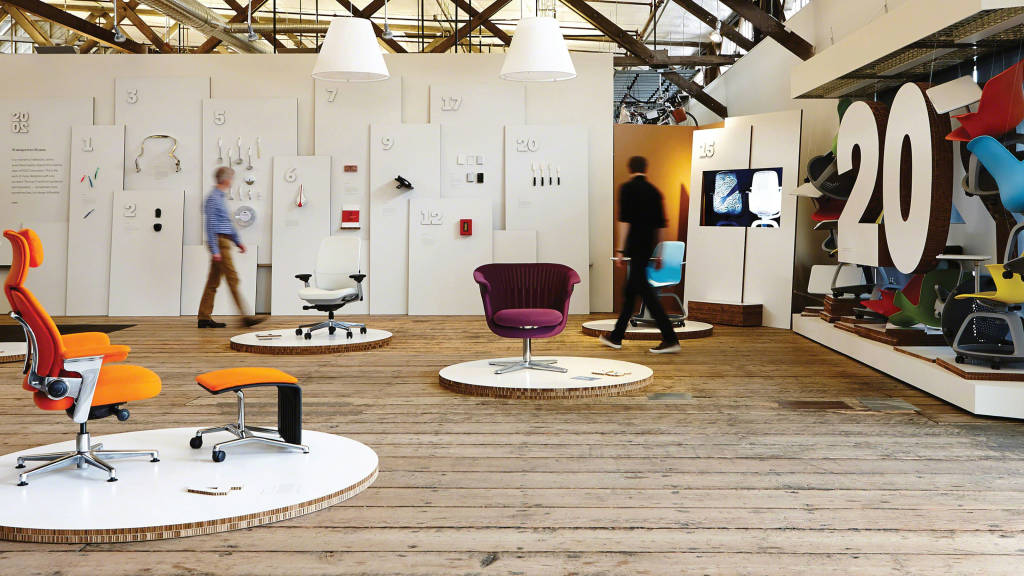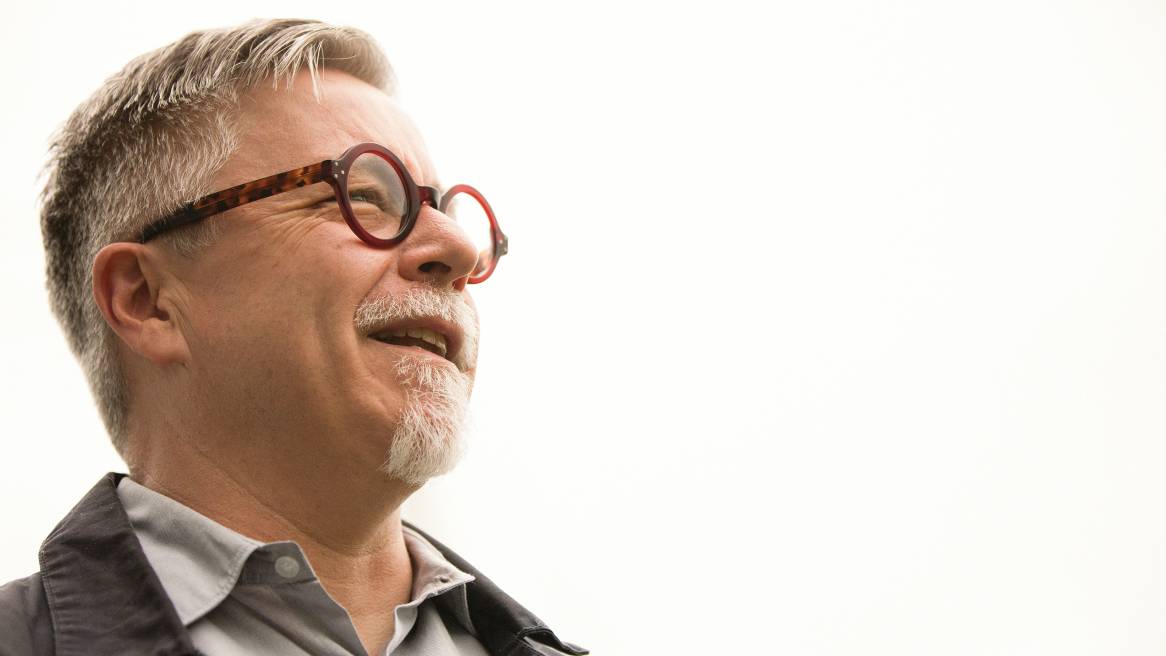Q + A with Tim Brown
Get creative, get messy and forget the word failure
Designer, author, TED speaker, IDEO CEO and recently appointed member of the board of directors of Steelcase, Tim Brown talks about creativity and how organizations can encourage it — or kill it.
360: How do you define creativity?
TB: In general, it’s the capacity to generate new ideas. For organizations, it’s creative competitiveness, or creative fitness: the capacity to have new ideas and to act on them, the ability to do something with the creative capacity that you have.
360: Business leaders don’t usually include creativity in their list of priorities. Why not?
TB: The focus for management for the last 50 years has been on operational excellence, which is all about optimizing systems. Conditions have obviously changed rapidly in the last decade or two, and the business environment is so much more volatile. So the idea of creativity, to be able to respond to unknown situations in ways that are generative, that create new kinds of solutions rather than just repeat solutions of the past, becomes more and more important. We’re going to see it on the agenda of many more businesses, at least the ones that don’t want to succumb to the disruption that’s around them.
360: Where would you place creativity on the list of priorities for a company today?
TB: I think it’s close to a 50/50 thing. Companies need to be equally operationally effective and creatively competitive. In some industries it’s even more extreme than that. In many digitally driven industries, in industries where creativity is already a focus, then arguably organizations need to be even more creative than half and half.
360: You’ve written that it’s the leader’s responsibility to provide spaces and tools that encourage creativity and collaboration. What are those spaces and tools?
TB: Unlike in the world of analytical or process driven work, in a creative or creatively-driven organization, we need a greater variety of environments. We need environments that support different energy levels, whether that’s active ideation and brainstorming or reflection, or conversation and review. We also need different kinds of spaces from an acoustic standpoint. We need different types of seating, so that people can bring different energy levels to different parts of work. One of the things that people tend to notice when they come to IDEO is our spaces and our environments. They’re not complex and they’re not necessarily hugely expensive to create, but they’re varied. They support teams, they support individuals. They support different kinds of work modes. They’re also often playful, because we want people to be in an optimistic frame of mind when they’re working on creative problem solving.

360: Is there a certain look and feel to a creative organization?
TB: For me it’s not just lots of colorful furniture and foosball tables, it’s more about evidence that people are trying ideas out. Are there prototypes lying around? Do I see work posted on the walls, so people can share ideas and talk about them? There’s sort of a certain level of messiness to the creative process, that tends to get reflected in truly creative environments. It’s one of those slightly paradoxical things, if we’re too precious about our space, we don’t always create the kind of creative environment that we want. One of the biggest challenges for the folks who look after the environments in our offices is trying to manage the chaos, and not let the mess get too out of hand because there’s stuff changing all the time.
360: Leaders need to give people permission for a certain amount of chaos, don’t they?
TB: Yeah. You want a culture where they ask for forgiveness rather than permission. In other words, the permission is already pervasive, to the point where it seems like it might step over the line occasionally but the culture is one where it’s a conversation about forgiving rather than having to get advanced permission for every risk you take. It’s clearly related to risk taking. If you want a creative organization that’s great at innovation and problem solving, you want them to take risks. If they have to get permission to take every risk, including making a mess of the wall or whatever, then the chances are they’re not going to be taking risks over the things that really matter. Highly permission-based cultures might be great operational cultures, they might be low variance cultures if you like, but they’re not great creative problem-solving cultures.
You want a culture where they ask for forgiveness rather than permission.
360: So, you need to embrace the chaos of innovation if you expect your company to succeed.
TB: Yeah, and let’s face it, it’s pretty hard to win the lottery if you don’t buy a lottery ticket. If you’re not actually launching new ideas out into the world, it’s pretty hard for you to compete. It doesn’t guarantee that you’re going to compete but, it’s pretty darn difficult if you’re not actually launching new things. It may not be the whole story but it’s a pretty important part of it.
360: Work today is very much project-based, yet so many organizations and teams are distributed. How do you develop a sense of trust, of being a cohesive team?
TB: I think that you’ve got to work on all the same things that you would work on if people were together. One of the things that we certainly found over our time, and I think we’ve made plenty of mistakes about, is it takes a while for teams to learn to trust each other. It maybe takes even longer when they’re geographically distributed, which is why actually getting on airplanes and meeting each other is actually still a valid and valuable thing to do. I couldn’t do my job and we couldn’t run our organization without using video and other digital collaboration tools. The truth is, we also put the effort in to get to know each other and meet each other. I think that remains important. We also need to have our teams stick together for a while. I think one of the perhaps under explored variables in creative competitiveness is how long teams work together.
I think often the way we run our organizations today, it’s very hard to get whole teams together. Hard to find enough time for them to be truly committed to the creative problem solving that we’re asking them to focus on. I think that’s sort of an organizational design problem that we need to think hard about. Imagine a sports team that hardly ever plays together, they’re probably not going to be as good as a team that plays together every day. I think we often let modern work processes, and constantly doing email actually get in the way of teams truly working together.

360: If we meet and talk over a cup of coffee or a beer, that sense of trust develops faster.
TB: Yes. From my perspective and the anecdotal evidence, you’re better off meeting a team member less often but with a richer interaction. The richness of interaction is how we build our human relationships, right? Again, if you think about it from a human centered perspective, meetings are kind of weirdly nonhuman in many ways, right? We’re forcing ourselves into a set of behaviors that don’t really allow us to understand each other, so we often resort to the kinds of social activities where we’re much more comfortable learning about folks, learning about what matters to them and understanding them well enough that we know how to be empathic to them. Perhaps avoid the kinds of difficulties and stresses and strains that might destroy trust.
The constant process in creativity of learning from things not going how you expected them to go: We label that failure but it’s not really failure at all. It’s actually the richest form of learning.
360: Failure is part of the creative process. How can leaders help people in organizations understand and accept failure as part of the process, and learn from it?
I think it’s unfortunate that the word “failure” became what we use to describe this weird condition of learning through things not going how you thought they were going to go, because that’s really what we’re talking about. Obviously we can think of failure as being the kind of catastrophic failure of something: failure of a bridge or failure of a new venture which goes out of business. There are learnings that come from those but they are learnings you would love to have not happen too often, particularly if human safety is involved. That’s a bit different from what is the constant process in creativity of learning from things not going how you expected them to go. We label that failure but it’s not really failure at all. It’s actually the richest form of learning.
One of my colleagues talks about how learning happens through disequilibrium, that moment when you suddenly just don’t know what’s going on. You’re confused because the world is not behaving how you thought it should behave. That is when your brain opens up to learn something; new neurons, connections are made. Creativity relies on that. It relies on those moments of disequilibrium. So you sort of have to seek failure at some level, to seek those moments when the world is not how you thought it was and that you then have a new insight about it. That is your new idea and then you move forward again. At the same time, the goal is not to fail at the catastrophic level too often. I would argue that if you do a really good job of failing as a learning process, by the time you get to the things that really really matter, you’ve actually designed most of the risk out, so the likelihood of catastrophic failure goes way down.
Tim Brown talks about the three roles leaders have in creatively competitive organizations, and how to assess the creativity of a company, in a Steelcase 360 Real Time podcast available on iTunes and SoundCloud.


